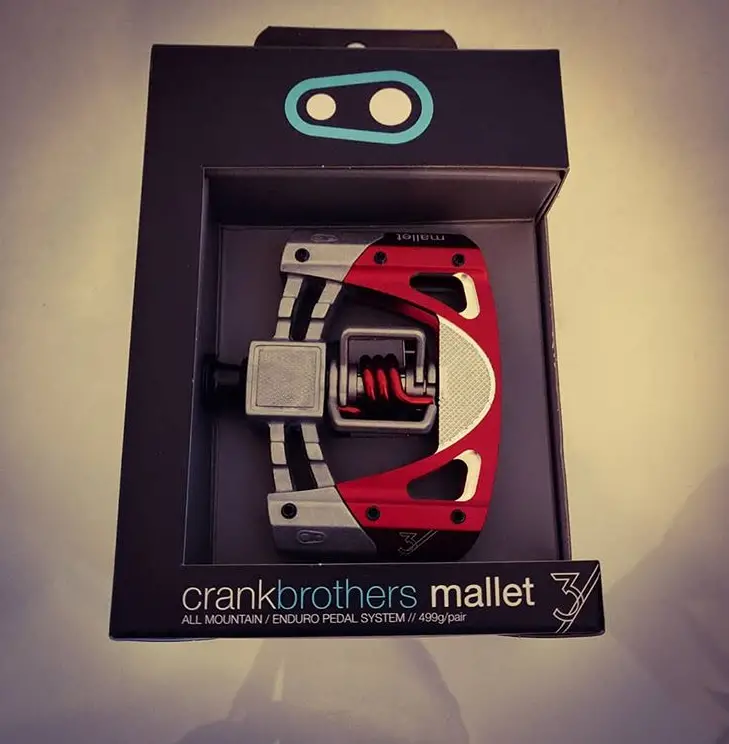
It’s essential that we talk about upgrading pedals because that’s your connection with the bike. You can have the best bike in the world but without suitable pedals, you won’t be able to use it properly.
I believe there is no right or wrong when choosing pedals, however, there are things to consider, like going with flat pedals or clipless pedals.
Even if you have a decent pair of pedals, you might want to try something new. I hope to help you with that.
Why Change Your Pedals from Flat to Clipless?
Three main reasons to change your pedals.
- Grip
- Durability
- Weight
Finding the right pedals means finding the ones that have a surface size and shape that you are comfortable with.
Clipless pedals literally bind your foot to the pedal by cleats which are screwed into special cycling shoes. They are great for having the maximum control over your bike but this system has some drawbacks.
Flat pedals, however, are much more subjective. Your grip depends on the surface shape, size, and pins. Not only that but your shoes as well.
Durability and weight depend a lot on the brand and model you choose. Some brands will decrease weight but sacrifice durability and vice versa. Choosing carefully can get you a pair of pedals that has everything you need.
Performance: Flat vs. Clipless Pedals
Performance is often disputed when considering flat vs. clipless pedals.
I’ve found that performance is always better with clipless pedals. However, I wouldn’t recommend them to anyone who isn’t actively training and developing mountain biking skills for several years already.
Performance-wise, clipless pedals will greatly increase downhill and level ground speed. You will lose less energy and power while pedaling, but you will also have more confidence and control at higher speeds.
If you are fairly new and didn’t master controlling a mountain bike properly, clipless pedals won’t do you any good. They let you cheat on skills and therefore never allow you to properly develop your “game”.
Everyone who considers themselves in this category of riders should start with a good pair of flat pedals that fits them perfectly. Flats will allow you to learn proper form and control because you can’t use cleats to pull the bike with your legs.
Not only do they affect your skills, but they make every mistake you make less dangerous for you or your bike. Clipless pedals can sometimes be hard to unclip from, especially for someone who doesn’t have a lot of experience using them.
Only, and I mean only when you’ve mastered all the necessary skills, should you switch to clipless pedals to increase performance.
This way, you won’t have to sacrifice your skills by rushing to gain performance too soon.
Easy to Use: Clipless Pedals
Don’t rush to the trails straight away. Clipless pedals can be tricky for a new user. I would recommend practicing a bit on the paved ground. Working on quick clipping and unclipping might be a good start.
I used to be a bit too brave until I banged my head so hard that my helmet broke. I didn’t practice unclipping, and once I made a mistake, my bike wouldn’t let go of me.
On flat pedals, you might have to invest some time in getting the grip and control over your bike but you will be glad in the end.
Adjustability
Unlike flat pedals, clipless ones can usually give you the option of adjusting several things. It all comes down to the manufacturer and model. Not every model can be made adjustable.
Since lots of new users, and some more experienced ones, have problems with stiff unclipping, brands like Shimano made their clipless pedals with a mechanism that can adjust how hard it is to unclip. Usually, this is done by widening the angle at which you have to wiggle your shoe out.
Your feet position can be adjusted as well by placing cleats in a range of positions at the bottom of your shoe.
Durability and Maintenance
There are really no durability issues with any mountain bike pedals. Both flat and clipless endure pretty much the same. They never last too long, simply because of the bearings. Unless you ride really easy and really slow, you will have to change your pedals once every 1-2 years.
Durability, however, depends on proper maintenance. Flat pedals require little to none, while clipless pedals benefit a lot from cleaning after every serious ride. Then again, applying water over and over again can start corrosion. Even if we are talking about aluminum parts, corrosion can destroy any mechanism.
Water dispensers are very much needed here, but never the ones containing oil or any slippery properties. Obviously, you don’t want your pedals to be slippery.
Cost of Clipless Pedals
Clipless pedals can get a bit expensive. Not because of the pedals themselves, but the shoes and changing cleats as well. When you add everything up, the price usually goes to double of what the flat pedals would cost you.
I’m not really an expert yet on clipless shoes, so I won’t spend too much about that here. I’ve only used two high-quality pairs in my whole experience. What I can tell you for sure is buy the ones that you can walk around in the dirt with. A good surface grip is important because there are times when you have to push your bike uphill.
From my experience, if you pay good money for clipless shoes and you read some genuine reviews about them, they will last longer and do the job for you better.
Cleats are not really expensive, but they wear out faster.
Can I Use Clipless Pedals With Regular Shoes?
Flat pedals are much more practical. Personally, I always prefer versatility over specialized usage. It’s because I like to use my bikes every day and I’m too lazy to change pedals all the time just because I need to have my regular sneakers on me.
Is it possible to ride clipless pedals with regular shoes? Yes, but neither is it safe nor easy to do. However, there is a solution…
Combo Pedals
So-called combo pedals have two different sides. One flat side and the other clipless. This way they are the most versatile of all. There are a few drawbacks, however.
They tend to be a bit heavier than a regular flat or clipless pedal. It’s not too much, but for those who are looking at every gram they add on their bike, it certainly is one of the downsides.
The second thing I noticed, rarely any of them are properly balanced. Meaning they always flip themselves to one side. If you are racing or chasing some targeted time on a trail, it becomes a pain to set them up every time you put your feet to the ground.
Then again, it is understandable why that is. Placing the bearing out of the center in order to make them balanced would probably affect structural integrity. Aluminum is vulnerable if not structured properly.
